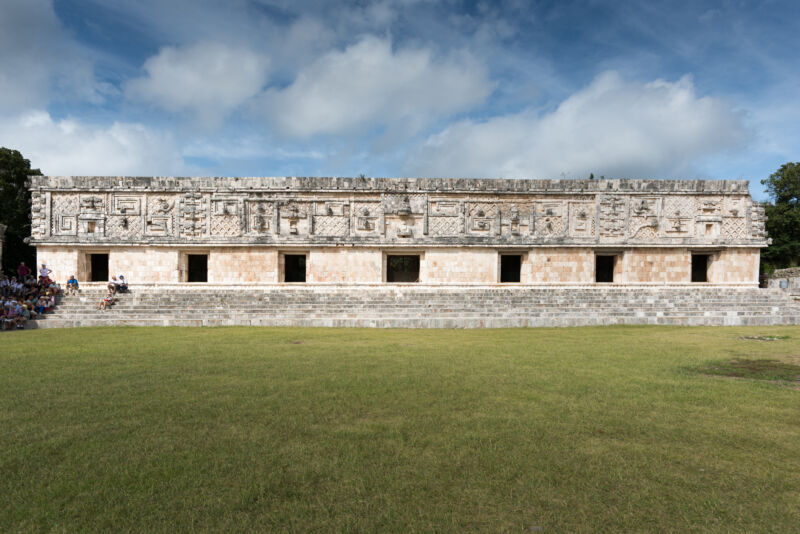
As civilizations evolve, so do the political regimes that govern them. But the transition from one era to another is not always quiet. Some ancient Mayan rulers made a very fiery public statement about who was in charge.
When archaeologists dug up the burned fragments of royal bodies and artifacts at the Mayan archaeological site of Ucanal in Guatemala, they realized they were looking at the last remnants of a fallen regime. There was no scorching on the walls of the structure they were found beneath. This could have only meant that the remains (which had already been in their tombs a hundred years) were consumed by flames in one place and buried in another. But why?
The team of archaeologists, led by Christina T. Halperin of the University of Montreal, think this was the doing of a new leader who wanted to annihilate all traces of the old regime. He couldn’t just burn them. He also had to bury them where they would be forgotten.
Into the fire
While there is other evidence of Mayans burning bodies and objects from old regimes, a ritual known as och-i k'ak’ t-u-muk-il (“the fire entered his/her tomb”), this is the first time burnt royal remains have been discovered somewhere other than their original tomb. They were found underneath construction fill at the base of a temple where the upper parts are thought to have been made from materials that had not lasted long.
Radiocarbon dating revealed these remains were burned around the same time as the ascent of the ruler Papmalil, who assumed the title of ochk'in kaloomte’ or “western overlord,” suggesting he may have been foreign. Inscriptions of his name were seen at the same site where the burnt fragments were unearthed. Papmalil’s rise meant the fall of the K’anwitznal dynasty—the one that the bones and ornaments most likely belonged to. It also marked the start of a period of great prosperity.
“Papmalil's rule was not only seminal because of his possible foreign origins—perhaps breaking the succession of ruling dynasts at the site—but also because his rule shifted political dynamics in the southern Maya Lowlands,” the archeologists said in a study recently published in the journal Antiquity.
The overthrowing of the K’anwitznal dynasty is evidenced on the wall of a temple at Caracol, a site not far from Ucanal. An engraving on a Caracol altar shows a captive K’anwitzanl ruler in bondage. Other engravings made only two decades later depict Papmalil as the ruling figure, and the way he is pictured giving gifts to other kings is a testament to his regime’s increased strength in foreign relations.
Ashes to ashes
The archaeological team sees Papmalil’s accession as a pivotal point after which the city of Ucanal would go on to thrive. As other rulers had done before him, he apparently wanted to dismantle the old regime and make the fall of the K’anwitznal rulers known to everyone. Though the location of the K’anwitznal tombs is unknown, the team used a map of the site they had already made to determine that the temple where the burnt remains were found stood in what was once a public plaza.
Halperin thinks that the bones of these royals and the lavish ornaments the royals were buried with were believed to have had some sort of life force or spirit that needed to be conquered before the new regime would be secure. It was evident, because of shrinkage, warping, and discoloration, that the human bones, which belonged to four individuals (three of which were determined to be male), had been burned, suggesting temperatures of at least 800° C (1,472° F). Fractures and fissures on the jade and greenstone ornaments were also signs of burning at high temperatures.
“Because the fire-burning event itself had the potential to be highly ceremonial, public, and charged with emotion, it could dramatically mark the dismantling of an ancient regime,” the team said in the same study.
To the archaeologists, there is almost no doubt that the burning of the bones and artifacts found at the Ucanal site was an act of desecration, even though the location where they had been thrown into the fire is still a mystery. They’re convinced by the way that the remains were treated no differently than construction debris, deposited at the base of a temple during construction.
Other findings from cremations have shown a level of reverence for the bones of deposed rulers and dynasties. At another site that Halperin also investigated, the cremated bones of a queen were arranged carefully along with her jewelry. That was apparently not enough for Papmalil. Even today, some leaders just feel the need to be heard more loudly than others.
Antiquity, 2024. DOI: 10.15184/aqy.2024.38
reader comments
30